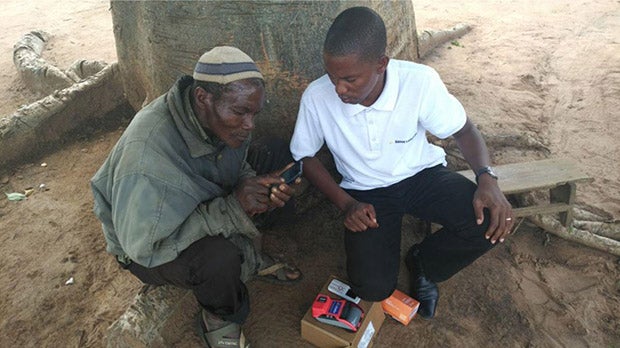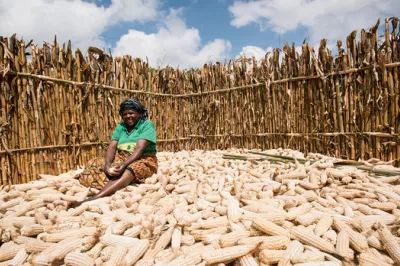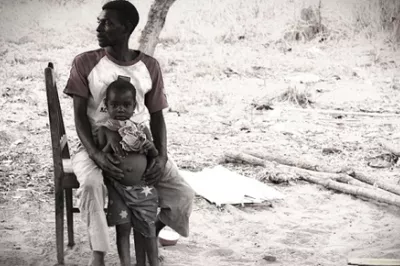Digital Payments That Resonate with Low-Income Farmers
The idea of using electronic money or digital financial services (DFS) to pay contract farmers for their production is not new in Mozambique. I first had a conversation about it in 2009. Some of the big agribusinesses had tried it, but none had succeeded. One explained succinctly the problems at the time: Most farmers don’t have mobile phones, network coverage is patchy and there’s nowhere to repair or charge your phone, much less convert the e-money on your phone into cash.

All true. The technological challenges listed by this agribusiness help explain why, according to national survey data in the CGAP Smallholder Families Data Hub, less than 1 percent of Mozambican smallholders have a mobile money account. Fortunately, many of these issues are less prevalent than they were at that time. But according to human-centered design research in Mozambique, these issues leave out one of the most important reasons so few smallholders use DFS, which has little to do with technology: Farmers haven’t been convinced that formal financial services are for people like them who have low incomes.
One of the major cotton producers in Mozambique, JFS, wants to show its client farmers that DFS can work for them. The company sees DFS first as a more secure way for its smallholder farmers to be paid. It also sees the potential for DFS to connect farmers to other financial services, such as savings accounts that would help them to pay for high-quality agricultural inputs and increase their incomes. Yet, from CGAP research on smallholder farmers, conducted with FSD Mozambique and ICC, JFS knows that both mobile phone penetration and awareness of DFS are low. In fact, CGAP’s financial diaries from Mozambique show that, in 2014, only 45 percent of smallholder farmers owned a mobile phone, and only 21 percent had even heard of mobile money. JFS realized that convincing farmers to accept DFS payments required a special approach. JFS worked with ICC to prepare a proposal and submitted it to FSDMoç for support. FSDMoç identified CGAP as a partner who could engage with JFS and ICC to embark on this venture. CGAP had been looking for a good opportunity to test the feasibility of DFS payments to smallholders and was happy to support the initiative. The first step was to employ human-centered design to understand the farmers’ needs and motivations.
The research showed that many of JFS’s farmers receive the largest part of their annual income in one payment, once a year during harvest, and then have to keep money safe for expenses, such as paying labor and school expenses, that arise several months later. Most farmers said they were interested in having a bank account, which they saw as a solution to their security and financial management problems. They mentioned that poor network coverage and faulty phones were a barrier to using DFS. Indeed, many didn’t have a phone, which is why JFS opted for a bank-based solution rather than a mobile money one. But most also said that they thought banks were only for people with lots of money, that opening an account was too complicated and required them to have documents they didn’t have and that branches were too far away.
In the words of one smallholder: “I don’t have ID. That’s why I can’t have a bank account. My financial situation also doesn’t allow me to have a bank account. I have never tried to get an ID card because it is very expensive. It costs 600 Mt [about $10], and you have to go several times to the city.” In fact, this is another misconception, albeit a partial one. The Central Bank allows alternatives to an official ID card. Most notably, you can use a voter’s card — issued free, every five years, near your residence — but some banks do require an official ID or a voter’s card, plus another supporting document.
At the end of the research, JFS put out a call for proposals to commercial banks and other financial institutions for a service offering that would meet its farmers’ requirements. A large number of banks submitted proposals, and it was interesting to see how many are eschewing brick-and-mortar branches and using DFS to make their services more available in rural areas. But only one proposal really corresponded to what low-income farmers said they needed and addressed the challenges that made them feel like financial services weren’t made for them.
It was from Letshego, a Botswana-based bank that opened in Mozambique seven years ago. Letshego has been developing a rural banking agent model that it describes as “simple, appropriate and accessible.” Letshego’s model addresses farmers’ technological challenges, allowing them to transact with or without a mobile phone, and offers features that meet their requirements — a safe place to store money that is located in their community and doesn’t have complicated opening requirements. Most importantly, a Letshego customer doesn’t need a lot of money to open an account. Farmers can make deposits and withdrawals via mobile or by visiting an agent in their own community, with minimal bureaucracy. The client fees are low; customers pay only for withdrawals and interbank transfers. And the trust that farmers have in JFS helps sell the idea.
JFS invited Letshego to demonstrate the service to farmers, who were very enthusiastic. During a simulated account opening, when one farmer saw the Bluetooth printer print out the details of her account, she said, “Now, that’s development!”
The next phase is to pilot the service, and there is much to do before then — in particular, establishing an agent network and defining liquidity management systems. Recognizing that DFS awareness is low, ICC will also be instrumental in the design of a financial education program to inform the product launch. But we expect that, before long, we will be witnessing the first successful system in Mozambique for paying farmers digitally — and not through mobile money, as one might expect, but through a new kind of bank account.




Add new comment